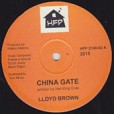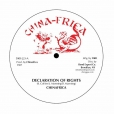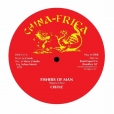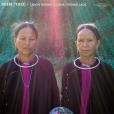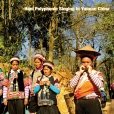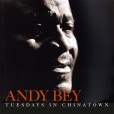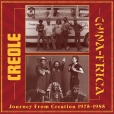Your basket is empty

Chinafrica was Wayne Chin’s next project, after his group Creole disbanded in the early-eighties.
Two shark-attack do-overs of foundational tunes, startlingly different: a deadly, sick, atmospheric Declaration Of Rights, with shades of Wackies; and a sprightly, in-your-face, digi Baba Boom Time, originally stepping out on Thunderbolt in 1987.
Creole’s personal rough mixes of sides recorded at the same late ‘70s session as the Channel One killer Beware.
Fishers Of Man is an extended mix, and Walls Of Jericho is teamed with a version retrieved from dubplate, adding synth.
Rawly ethereal, other-worldly singing by members of hill tribes in China, Vietnam, and Laos.
‘As with many other ethnic groups of the area, a traditional singing pattern is used with each singer adapting words to context. Many of these songs express intimate, strong emotions that bring tears to the performers while they are singing. The cascading mournful feel of this music is beautifully transcendent. You’ve never heard anything like it.
‘Instruments used by the ensemble include the babi (single tree leaf ) and mepa (tree leaf rolled up into the shape of a horn or mirliton), a chiwo (three-stringed bowed instrument), a labi (six-holed bamboo flute), a lahe (three-stringed small lute) and a meba (vertical reed instrument).’
Recorded in 2000, with more or less the same lineup as Shades Of Bey, and the same richness of repertoire and textures. There are two Milton Nascimento classics, standards like I’ll Remember April and Little Girl Blue, and the sultry original Tuesdays In Chinatown. Top-notch Bey, supported by Ron Carter, Geri Allen, Mino Cinelu and Steve Turre. First time on vinyl. Warmly recommended.

